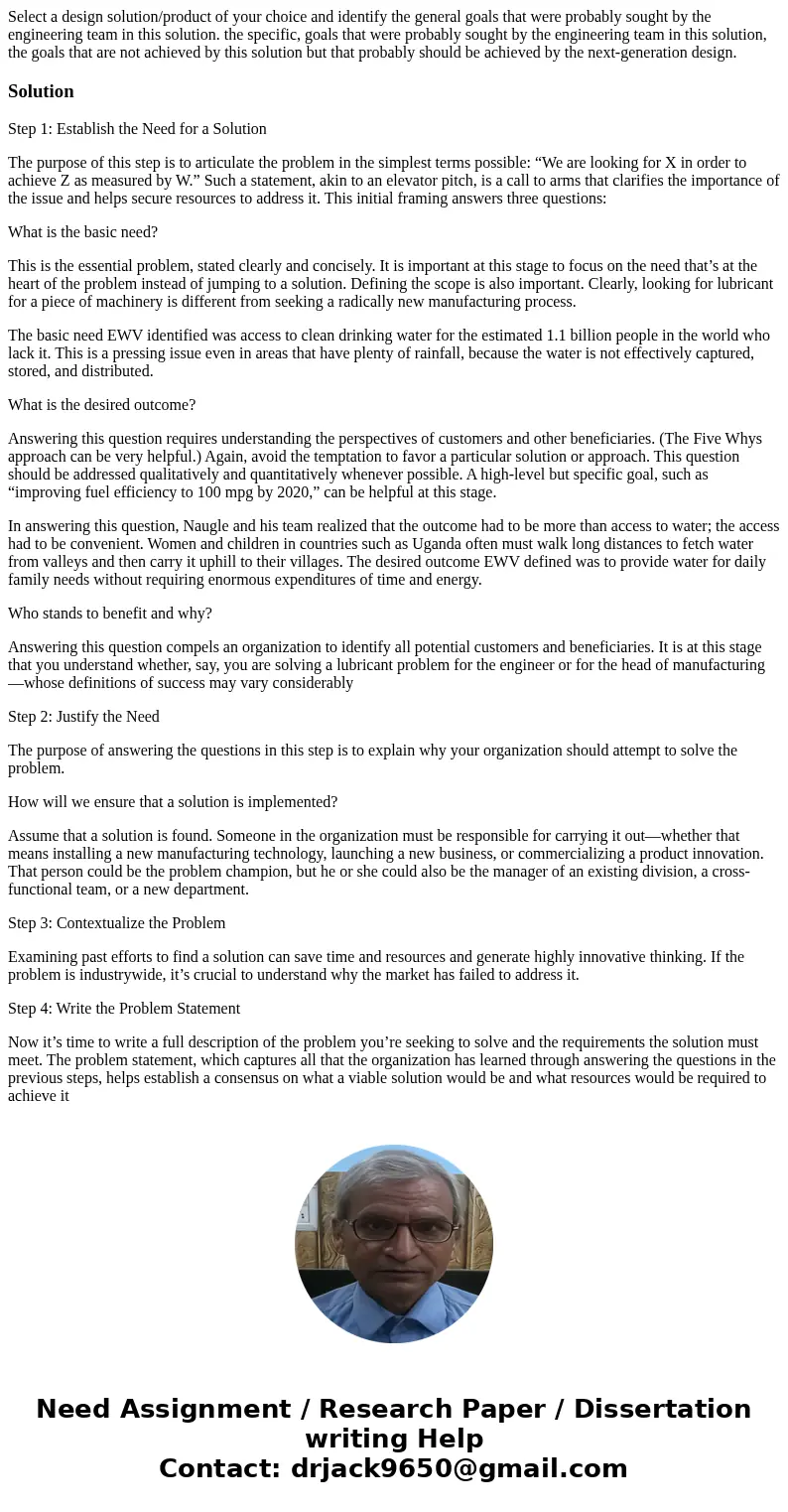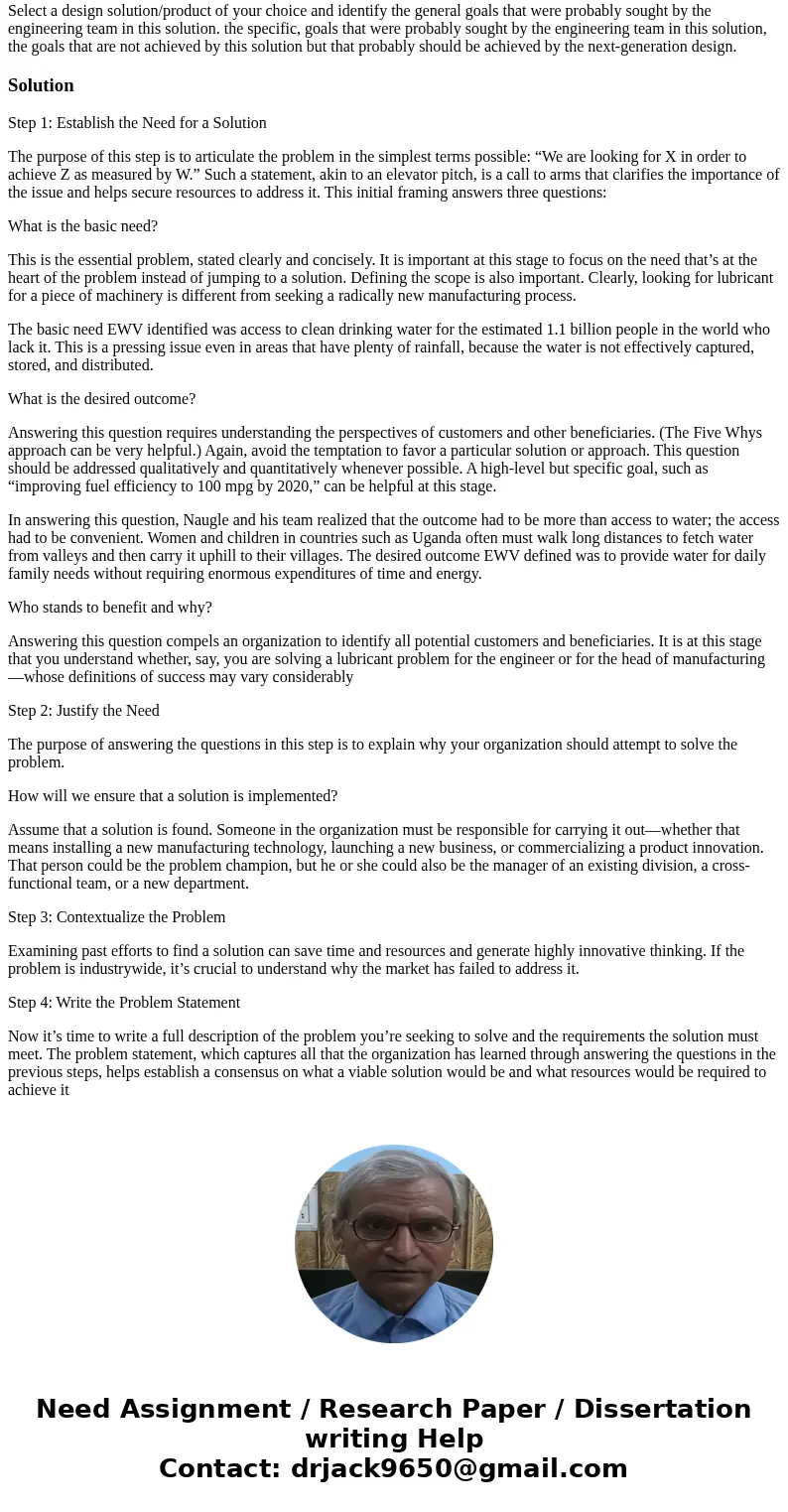Select a design solutionproduct of your choice and identify
Solution
Step 1: Establish the Need for a Solution
The purpose of this step is to articulate the problem in the simplest terms possible: “We are looking for X in order to achieve Z as measured by W.” Such a statement, akin to an elevator pitch, is a call to arms that clarifies the importance of the issue and helps secure resources to address it. This initial framing answers three questions:
What is the basic need?
This is the essential problem, stated clearly and concisely. It is important at this stage to focus on the need that’s at the heart of the problem instead of jumping to a solution. Defining the scope is also important. Clearly, looking for lubricant for a piece of machinery is different from seeking a radically new manufacturing process.
The basic need EWV identified was access to clean drinking water for the estimated 1.1 billion people in the world who lack it. This is a pressing issue even in areas that have plenty of rainfall, because the water is not effectively captured, stored, and distributed.
What is the desired outcome?
Answering this question requires understanding the perspectives of customers and other beneficiaries. (The Five Whys approach can be very helpful.) Again, avoid the temptation to favor a particular solution or approach. This question should be addressed qualitatively and quantitatively whenever possible. A high-level but specific goal, such as “improving fuel efficiency to 100 mpg by 2020,” can be helpful at this stage.
In answering this question, Naugle and his team realized that the outcome had to be more than access to water; the access had to be convenient. Women and children in countries such as Uganda often must walk long distances to fetch water from valleys and then carry it uphill to their villages. The desired outcome EWV defined was to provide water for daily family needs without requiring enormous expenditures of time and energy.
Who stands to benefit and why?
Answering this question compels an organization to identify all potential customers and beneficiaries. It is at this stage that you understand whether, say, you are solving a lubricant problem for the engineer or for the head of manufacturing—whose definitions of success may vary considerably
Step 2: Justify the Need
The purpose of answering the questions in this step is to explain why your organization should attempt to solve the problem.
How will we ensure that a solution is implemented?
Assume that a solution is found. Someone in the organization must be responsible for carrying it out—whether that means installing a new manufacturing technology, launching a new business, or commercializing a product innovation. That person could be the problem champion, but he or she could also be the manager of an existing division, a cross-functional team, or a new department.
Step 3: Contextualize the Problem
Examining past efforts to find a solution can save time and resources and generate highly innovative thinking. If the problem is industrywide, it’s crucial to understand why the market has failed to address it.
Step 4: Write the Problem Statement
Now it’s time to write a full description of the problem you’re seeking to solve and the requirements the solution must meet. The problem statement, which captures all that the organization has learned through answering the questions in the previous steps, helps establish a consensus on what a viable solution would be and what resources would be required to achieve it


 Homework Sourse
Homework Sourse